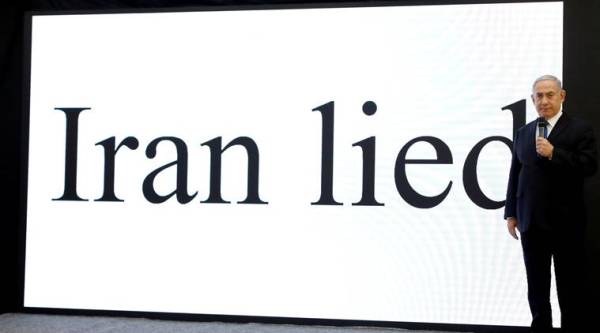 Israeli Prime Minister Benjamin Netanyahu speaks during a news conference at the Ministry of Defence in Tel Aviv, Israel, April 30, 2018. REUTERS/Amir Cohen TPX IMAGES OF THE DAY
Israeli Prime Minister Benjamin Netanyahu speaks during a news conference at the Ministry of Defence in Tel Aviv, Israel, April 30, 2018. REUTERS/Amir Cohen TPX IMAGES OF THE DAY
Israeli Prime Minister Benjamin Netanyahu on Monday announced what he said was evidence of a secret Iranian nuclear weapons program called ‘Project Amad’ that could step up pressure on the United States to pull out of a 2015 nuclear deal with Iran. After his presentation, US Secretary of State Mike Pompeo said the information showed that Iran’s leaders lied to their people about the nuclear weapons program. But the US Secretary of State declined to say whether the documents provided evidence of a violation of the nuclear deal.
What happened today?
The purported evidence provided by the Israeli Prime Minister dated to the time before the 2015 accord was signed. He added that Tehran had also kept important files on nuclear technology since then, and continued adding to its “nuclear weapons knowledge”.
Meanwhile, Iran dismissed Netanyahu as “the boy who cried wolf”, and termed his presentation propaganda. Pompeo, on his part, conceded that while the existence of the Amad nuclear project was known for a while, the fresh material discovered by the Israelis will help better understand the scope and scale of the program.
Pompeo added that the documents make “very clear that at the very least the Iranians have continued to lie to their own people.”
Asked whether the information indicated a violation of the Iran nuclear agreement, Pompeo said: “The president will ultimately have to make a determination about that too.”
What was Donald Trump’s reaction?
US President Donald Trump has threatened to pull the country out of the international deal unless it is renegotiated by May 12. After Netanyahu’s presentation, Trump suggested he backed the Israeli leader’s remarks. At Israel’s Defence Ministry, Netanyahu stood in front of stacks of files representing what he described as a vault full of Iranian nuclear documents obtained weeks before.
“Iran lied about never having a nuclear weapons program,” he said. “One hundred thousand secret files prove it did. Second, even after the deal, Iran continued to preserve and expand its nuclear weapons knowledge for future use.”
What did the White House have to say about the development?
The White House acknowledged receiving the information from Tel Aviv, saying it was examining it carefully. “This information provides new and compelling details about Iran’s efforts to develop missile-deliverable nuclear weapons. These facts are consistent with what the United States has long known: Iran had a robust, clandestine nuclear weapons program that it has tried and failed to hide from the world and from its own people,” the White House said in a statement.
What was the 2015 nuclear deal all about?
As per the 2015 nuclear deal struck between Iran and six major powers – France, Britain, China, Germany, Russia and the United States – Tehran had agreed to limit its nuclear program in return for relief from US and other economic sanctions. Donald Trump gave France, Britain, and Germany a May 12 deadline to fix what he views as the deal’s problems. For instance, the deal’s failure to address Iran’s ballistic missile program, the terms by which inspectors visit suspect Iranian sites, and “sunset” clauses under which some of its terms expire – or he will reimpose U.S. sanctions.
What Israeli Prime Minister Netanyahu provided is, however, not surprising to world powers who have long concluded that Iran was pursuing atomic weapons before the agreement was signed in 2015. That is in part why they imposed sanctions in the first place.
(With inputs from Reuters)